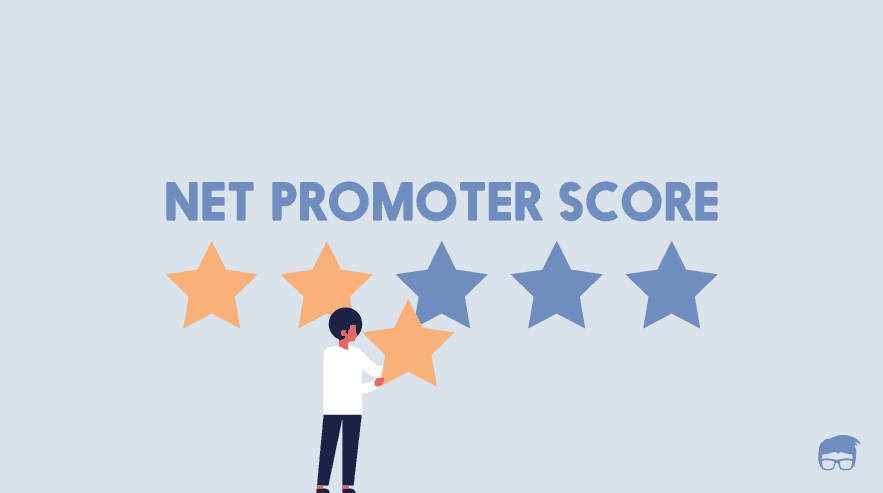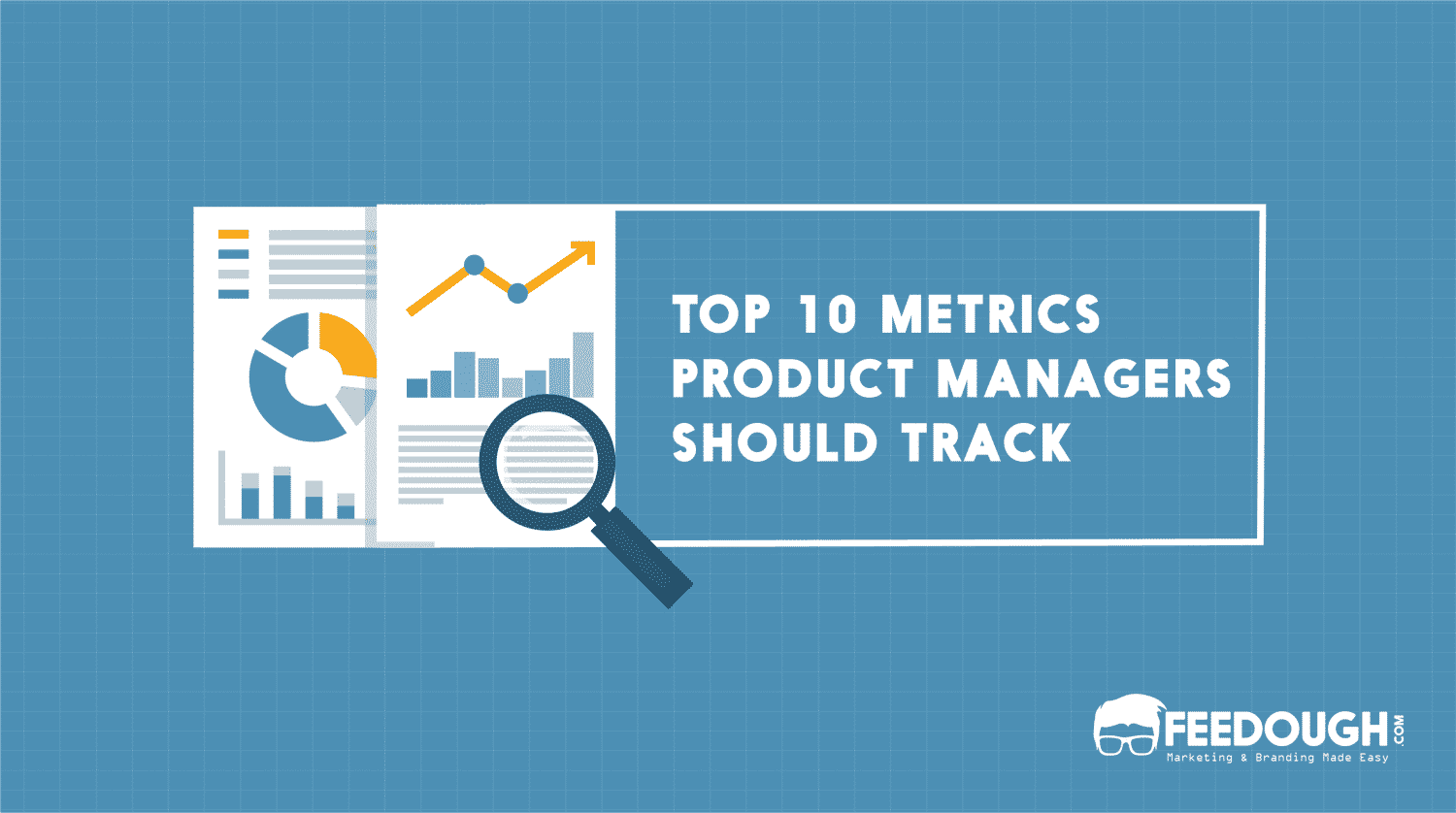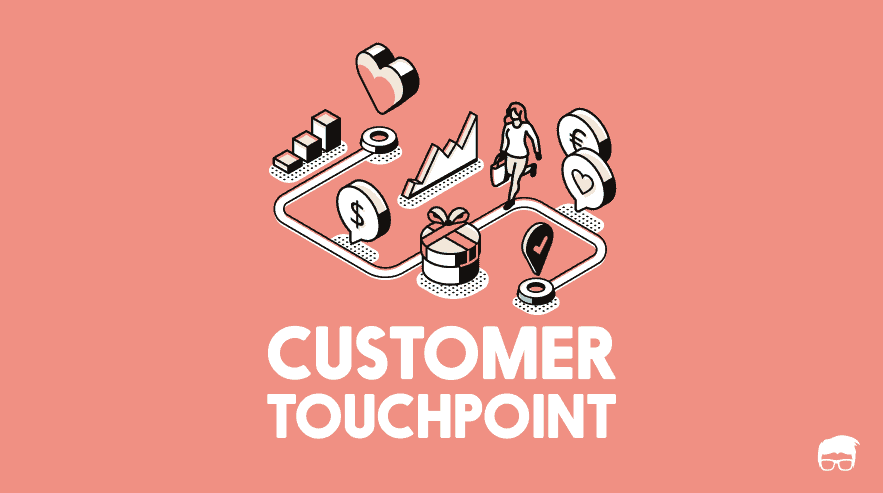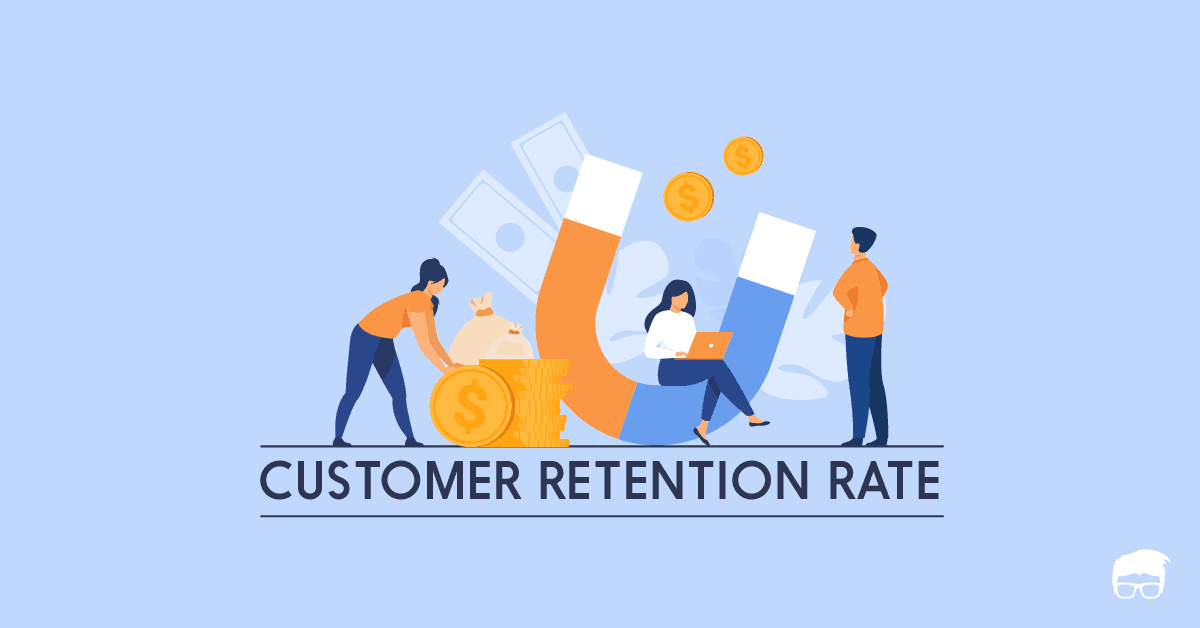Customer reviews, ratings, and recommendations have become the three new Rs for your business.
Why, you ask?
96% of customers prefer to share their experience with a minimum of 15 friends and family members instead of the company itself. This means that people are constantly sharing recommendations exponentially. So even if your logo, social media, advertisements, are all up to the mark, your customer recommendations will decide how successful your business will be.
Now, there’s a specific metric which calculates how likely is your brand to get a recommendation.
It’s the net promoter score.
But before we move on to discuss how to calculate net promoter score, it’s important to understand what it means and why exactly is it important.
What Is Net Promoter Score?
The Net Promoter Score (NPS) is a business metric used to estimate the likeliness of customers to recommend a brand’s products or services to others.
The people who are likely to recommend your brand are called ‘promoters’ and the ones who don’t want to recommend are called ‘detractors’. The term ‘’ lies in your net promoter score.’ refers to the number of promoters minus the detractors.
The net promoter score is a quantitative measurement measured by surveying customers with the following question –
“How likely are you to recommend brand ABC to your friends and family on a scale of 0-10 with 0 meaning least likely and 10 meaning most likely?”
Answers to this question are then compiled and placed into the NPS formula.
The NPS not only provides the likeliness of recommendation but it is important as it provides insights into the quality of your customer experience and customer satisfaction.
Why Is The Net Promoter Score important?
Every business wants to better their customer satisfaction rates. Net Promoter Score is a user-friendly business metric important for doing exactly this. Here are a few points explaining why your net promoter score is important:
Customer Loyalty
Net promoter score is important to ascertain your customer loyalty levels. Since acquiring new customers is about 5-25 times more expensive, businesses need to make sure that their existing customers are satisfied. A satisfied customer will naturally come back to your brand as well as recommend it to more people.
Measuring your NPS over time will help you fix the loopholes that cause customer friction and therefore, help your customers remain loyal to your brand.
Word Of Mouth Marketing
Net promoter score is an important indicator of the word of mouth marketing and referral marketing statistics. Word of mouth marketing is an important indicator of a satisfied customer as about 80% of customers who feel satisfied with your brand tend to recommend your brand to others. It also weighs heavily for your brand because this type of marketing develops gradually and on its own.
There is only a little that you, as a marketer, can do to analyse word of mouth marketing because it is not an active form of marketing. Measuring your NPS is important as it helps analyse this word-of-mouth traffic and boost referral marketing.
Negative Recommendations
Net Promoter Score is not only important for determining how many people will positively recommend your brand but also to determine how many will negatively recommend your brand. important to work with the detractors. Dissatisfied recommendations can spread like fire and be detrimental to your brand’s reputation.
Imagine every dissatisfied customer as a customer who you lost and turned to the negative side. You need NPS to understand how many such customers have you lost and then strategise measures to get them back.
Churn Rate
An NPS survey is important to determine your customer churning points. It need not be restricted to recommendation probability. You can expand your survey questions to include questions about improvements, suggestions, and more constructive feedback.
This way you can make the use of NPS multi-dimensional and analyse numerous aspects of your customer’s experience.
Competitor Analysis
Many times brands publicly disclose their NPS figures. You can measure your NPS and compare it with your competitor businesses. You can also use your NPS and compare it to the average of your industry’s NPS.
This kind of comparison is important to conduct a wholistic competitor analysis as to where your business stands, what strategies work for your competitors, and what strategies work for your business.
How To Calculate Net Promoter Score?
Net Promoter Score can be calculated in two ways:
Online Tools
- SurveyMonkey – A freemium tool to measure NPS and other KPIs with monthly subscription plans
- SurveySparrow – A freemium tool to measure NPS and other KPIs with monthly subscription plans
- NPScalculator – A free tool to measure NPS
Manual Calculation
The net promoter score of a brand is measured using a survey with questions focusing on customer experience and satisfaction. After the responses to those answers are collected the following formula is used:
NPS = percentage of promoters – percentage of detractors

The resultant figure is a score that can range from negative 100 to positive 100.
The main question in an NPS survey is how likely is one to recommend your brand to others on a gradient scale of 0 to 10, with 0 meaning ‘not likely at all’ and 10 meaning ‘highly likely’. Based on the responses to this question consumers can be categorised into three categories:
- Promoters: Customers who answer the question with 9 or 10 are called promoters. Promoters are usually loyal and satisfied customers who will bring in more customers for you through referral marketing.
- Passives: Customers who answer the question with 7 or 8 are called passives. Passives are moderately satisfied and usually do not pass either positive or negative recommendations. Therefore, they are more likely to get gripped away by competitors.
- Detractors: Customers who answer the question with 0 to 6 are called detractors. Detractors are not only the most dissatisfied but may switch to your competitor at the earliest as well as discourage your brand to others.
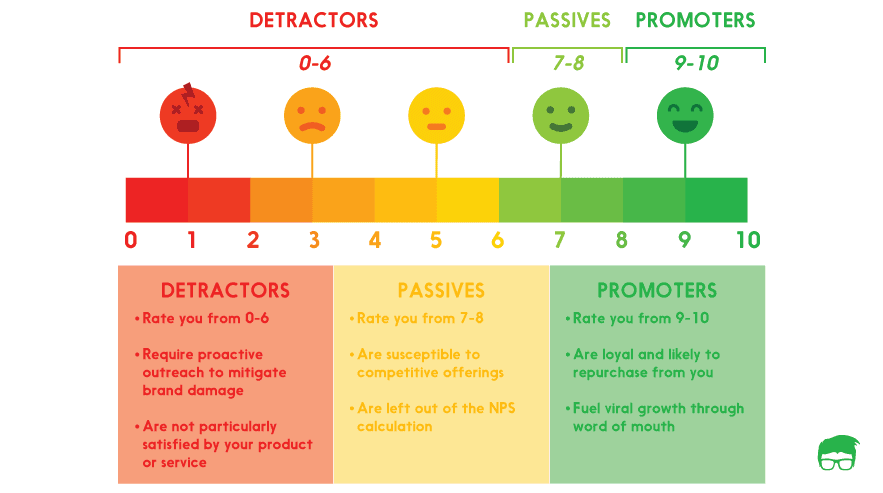
For example – You surveyed 10 customers. 5 people responded with 9, 3 responded with 7, 2 responded with 4. The percentage of promoters would be 50% and the percentage of detractors would be 20%. Your NPS would be 50%-20% i.e. 30. It is important to note that NPS is not a percentage, it is merely calculated using percentage data.
To begin compiling data and calculating your NPS you can either ask customers the main question of how likely are they to recommend your brand to others from 0-10, or you can create a survey with a couple of more questions. Creating an NPS survey is considered a better approach since it helps gain a wholistic view of customer experience metrics.
How To Create An NPS Survey?
To gain a complete view of your customer’s experience create an NPS questionnaire with qualitative and quantitative questions, both. The ‘must-haves’ to build an effective NPS survey are:
Demographic Questions
Include questions about age, gender, location, income, etc. This will help you target newer strategies based on broader metrics like age and gender.
For example – 20-year-olds are mostly promoters and show high NPS, but the 40-year-olds are passives and detractors and show low NPS.
Focus Question
The focus question of your NPS survey would be:
“How likely are you to recommend brandABC to others on a scale of 0 to 10, where 0 means not likely at all and 10 means definitely going to recommend.
Follow-Up Questions
Follow-up questions are optional. If you want to gain a uni-dimensional understanding of the probability of being recommended, then you can create your survey with the demographic and focus question. If you want to gain a multi-dimensional understanding include follow-up questions like:
“What is the reason behind your score ?”
“What would you suggest to help make brandABC better?”
“Which features from us do you use the most?”
“Have you ever felt your experience with brandABC has been disappointing?”
“What can we do to make you a happier customer?”
“Can we reach out to you in the future regarding your responses?”
NPS surveys must be short and precise if you want customers to give true answers. After creating the survey you can send it out to customers through emails, subscription letters, pop-ups on your website, calls, or in-person at stores and offices.
How To Use Net Promoter Score?
After you have sent out surveys, you have to collect responses, organise them, and analyse them systematically. Below are methodological steps to help you calculate and make use of your NPS:
Step 1 – Interpreting The NPS Score
Now we need to figure out how to use this data. Begin with segregating the responses into promoters, passives, and detractors. Next, calculate your NPS. Different NPS mean different things:
- Above 0 – Customers are happy, satisfied, and recommending your brand positively
- Equal to 0 – Customers are moderately satisfied, and can easily switch to competitors
- Below 0 – Customers are unhappy, dissatisfied, and probably discouraging the use of your brand
Step 2 – Categorising The NPS Score
The basic NPS has given you an idea of how your customers feel. Now we segregate these responses based on demographics. Create broader age, income, location, gender, etc. categories and then find the NPS for each.
For instance, for a survey of 20 customers, the gender and age-wise categorization of NPS may look like:

Step 3 – Responding To Surveyors
If your survey had only demographic and core questions this step does not apply to you.
But if your NPS survey had follow-up questions then the next step would be to make a note of all suggestions.

Since the follow-up questions form the qualitative part of the survey there is no way to measure it as such. But what you can do is:
- Make a list of the most frequently suggested feedback
- Respond personally to all surveyors:
- To Promoters – You can ask your promoters to encourage more friends to purchase your products or partner with them to be an influencer for your brand.
- To Passives and detractors – Send personal responses to their suggestions and problems. If they are too dissatisfied with your service send apologies.
Step 4 – Re-planning and Re-Structuring Based On Feedback
Lastly, make use of the feedback and follow-up questions to re-organise your strategies. If most of your customers are complaining about your return and replacement service then you must evaluate and make necessary modifications.
As Nichole Elizabeth DeMeré stated –
“think of NPS, or Net Promoter Score, like rocket fuel. If you leave it alone, it won’t do much. But when you load it into a responsive, proactive, customer-driven company: blast off.”
What Is A Good NPS?
Now that you have calculated your NPS and analysed it you must interpret whether your NPS is a good score for your business industry or not. Understanding your NPS relative to other brands and companies in the same industry will give you context to judge your standing in the market.
For instance, if you are a cable TV provider. Yous NPS is 15. From a range of -100 to +100, the number 15 might seem too low. You might end up believing that your customers are dissatisfied and you need to make a lot of changes to your work. It is only when you use an industry-wise NPS guide you can understand that a score of 15 for a cable TV provider is a high NPS score.
To understand more about what a good NPS is and what is not you must look at the various NPS benchmarks that exist.
Net Promoter Score Benchmarks
NPS may vary from industry to industry, therefore use these NPS benchmarks by industry to understand what is a good NPS for your field:
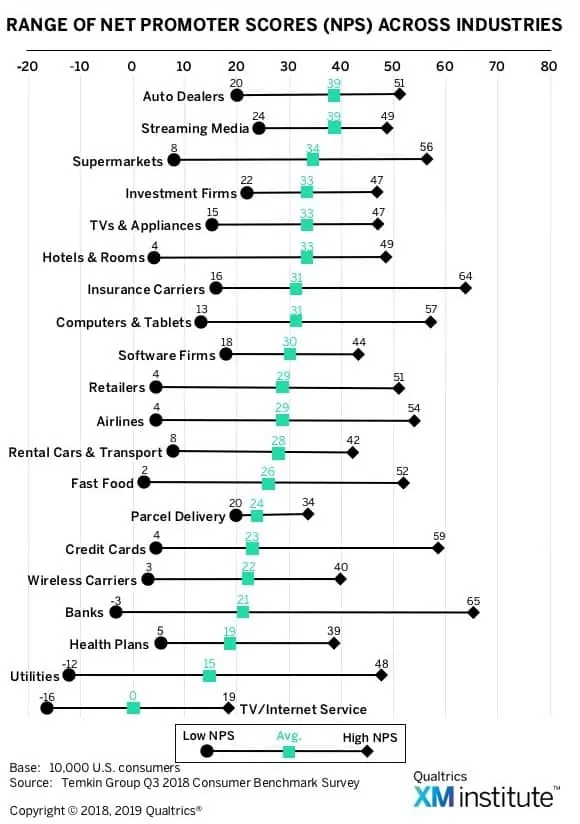
Now that you are well-versed with NPS, its importance, calculation, and uses, create your NPS survey and start learning from your customers. It’s time to start asking questions using this business metric for insights into your customer’s experience.
Go On, Tell Us What You Think!
Did we miss something? Come on! Tell us what you think about this article on net promoter score in the comments section.
A marketer with a specialisation in Economics, Law and Computer Studies. Performed social media marketing for McDonald’s, GoIbibo, and LaughGuru.
